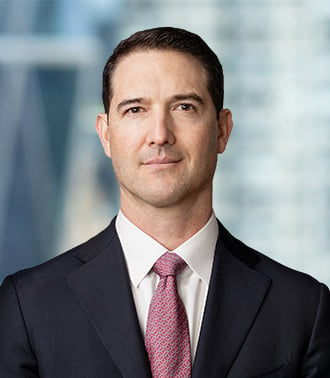Two New Hazardous Substances: Key Impacts of Listing PFOA and PFOS Under CERCLA
Consistent with EPA’s October 2021 PFAS Strategic Roadmap, the Environmental Protection Agency (EPA) has officially added two PFAS (per- or polyfluoroalkyl substances) to the list of hazardous substances under the Comprehensive Environmental Response, Compensation, and Liability Act (CERCLA or Superfund).1
On April 19, 2024, EPA published a final rule designating two PFAS legacy chemicals — perfluorooctanoic acid (PFOA) and perfluorooctanesulfonic acid (PFOS), including their salts and structural isomers — as CERCLA hazardous substances. EPA is listing PFOA and PFOS as hazardous substances pursuant to CERCLA Section 102(a) because “significant scientific evidence [suggests] that these substances, when released into the environment, may present a substantial danger to public health or welfare or the environment.”2
The rulemaking exposes a wide range of industries and governmental entities to potential Superfund cleanup liability for releases of PFOA and PFOS, including possibly (1) PFAS manufacturers or importers; (2) PFAS processors; (3) manufacturers of products containing PFAS; (4) downstream product manufacturers and users of PFAS products; and (5) waste management and wastewater treatment facilities.
Impacts of the Proposed Rule
Liability for Response Costs Under CERCLA Section 107
CERCLA establishes liability for owners, operators, arrangers, and transporters for the release or threatened release of a hazardous substance that caused response costs. 42 U.S.C. § 9607(a). Due to the new rule, a party responsible for the release or threatened release of PFOA or PFOS could become a liable party at a facility, subject, of course, to the ordinary CERCLA defenses. This means the party could be subject to (1) a contribution claim or cost recovery claim from a party under Sections 113 or 107, respectively, that has incurred response costs; (2) a cost recovery claim from EPA if EPA performs the cleanup itself; or (3) a unilateral order from EPA for the abatement of an “imminent and substantial endangerment to the public health or welfare or the environment” under Section 106.
In tandem with the rule, EPA issued a CERCLA PFAS enforcement discretion and settlement policy that describes EPA’s enforcement priorities for PFAS. While EPA’s enforcement policy states that it plans to focus enforcement of the proposed rulemaking on entities that have manufactured and released significant amounts of PFOA or PFOS into the environment, it is not required to exercise such constraint — nor is it guaranteed that such a commitment would be kept by key officials appointed by a subsequent administration to oversee EPA enforcement. EPA maintains that it has the discretion to pursue cost recovery claims or to enter a unilateral order with any potentially responsible party.3 Private parties also may seek contribution or cost recovery from any potentially responsible party, including only minor parties.
Notwithstanding its broad reach, CERCLA does not impose liability on manufacturers of “useful products” who did not arrange for the disposal of their products at a particular site. See Burlington N. & Santa Fe Ry. Co. v. United States, 556 U.S. 599, 610 (2009) (“[A]n entity could not be held liable as an arranger merely for selling a new and useful product if the purchaser of that product later, and unbeknownst to the seller, disposed of the product in a way that led to contamination.”).
Cleanup Standards for PFOA and PFOS
There is uncertainty regarding what cleanup standards would apply to a CERCLA cleanup of PFOA or PFOS contamination. The rule emphasizes that CERCLA and the National Contingency Plan provide for site-specific cleanup standards to ensure that a remedy is “protective of human health and the environment.” As such, cleanup standards should be identified on a site-by-site basis. For PFOA and PFOS, a potential cleanup standard is the Maximum Contaminant Level (MCL) for drinking water cleanups. The MCLs for PFOA and PFOS are 4.0 parts per trillion, per the April 10, 2024 PFAS National Primary Drinking Water Regulation under the Safe Drinking Water Act. The rule also suggests that state MCLs and non-chemical standards, such as “location-specific” and “action-specific” requirements, could be used to establish a site-specific cleanup standard.
Further reinforcing this complexity, state regulations provide an inconsistent patchwork of regulatory levels for PFOA and PFOS, with some states imposing binding cleanup standards, others providing non-binding guidance, and still others lacking any formal or informal guidance.
Allocations at Existing Sites
Adding PFOA and PFOS as hazardous substances carries potential implications for CERCLA cost allocations. First, adding new contaminants potentially brings in new parties to existing sites, which could reduce the shares for the existing parties that did not dispose of PFOA or PFOS. While CERCLA does not require EPA to bring in additional parties, EPA Guidance calls upon the agency to identify and involve the largest feasible number of potentially responsible parties, including public entities. In addition, if a new contaminant of concern (COC) is listed and new parties become liable or potentially liable, the existing parties may make contribution claims against those new parties pursuant to CERCLA Section 113.
Second, including a new contaminant to a CERCLA site could, in some circumstances, alter an existing allocation (it could even require reconsideration of the allocation methodology). An existing party’s share of the cost of the remedy could increase if they disposed of PFOA or PFOS at the site, in addition to the other contaminants for which they are liable or potentially liable. Conceivably, a party that has no connection to PFOA or PFOS at a site where the substances are identified could find its relative share of site response costs decrease.
Identification of New Superfund Sites
Adding PFOA and PFOS as hazardous substances potentially creates new Superfund sites. EPA or a state could determine that an area with known PFOA or PFOS contamination poses a threat to public health or welfare of the United States or the environment, and, pursuant to EPA’s regulations, designate the area as a Superfund site on its National Priorities List, thereby initiating the process of identifying potentially responsible parties and starting the remediation process.
Remedial Investigations and Remedies
Depending on the stage of the remedial process, adding PFOA and/or PFOS as a contaminant may alter the scope of the site investigations, risk assessments, or remedy. For example, the scope of soil excavation or the nature of a groundwater remedy could change based on the presence of contaminants not previously identified as hazardous substances. In this manner, adding contaminants could alter an existing remedy or expand the area of an existing Superfund site. Adding PFOS and/or PFOA as COCs at a site could also mean revising existing investigations or risk assessments. For example, EPA could revisit the protectiveness of remedies at sites through its five-year review process. Each of these alterations could add time, complexity, and uncertainty to the remedial process and could lead to the reopening of sites that were previously closed.
Reopener Clauses
Parties that have resolved their CERCLA liability to EPA or to a state (see below) typically have reopener clauses in their settlement agreements. These reopener clauses are sometimes limited to the contaminants known or listed at the time of settlement. Therefore, depending on the specific language of the reopener clause, parties that may believe their liability has been resolved could find themselves once again subject to CERCLA liability due to the presence of PFOA and/or PFOS contamination at the site. Thus, a careful review of the terms of existing settlement agreements is warranted in light of EPA’s action.
State Superfund Laws
Many states have enacted hazardous waste cleanup laws under state authorities. Some of these laws identify hazardous substances by reference to the CERCLA definition. Accordingly, in some states, PFOA and PFOS have automatically become subject to state regulatory oversight, without further action required by the state.
State and federal cleanup laws do not overlap entirely; there may be differences in scope, defenses, statutes of limitation, or other provisions. For example, CERCLA statutes of limitations may preclude further action under CERCLA stemming from adding PFOA and PFOS as a hazardous substance (for instance, at a site where the remedy is undertaken long ago or where an order resolving liability has been entered), but may not preclude state action if the state has a different applicable statute of limitation. Moreover, a site that is under state oversight, but where EPA has taken no action, could still be impacted by the listing of PFOA and PFOS. This analysis is necessarily state- and statute-specific.
Notification Requirements
Section 103 of CERCLA establishes notification requirements for the release of hazardous substances in quantities equal to or exceeding the relevant “reportable quantity.” 42 U.S.C. § 9603. The rule lists the “reportable quantity” for PFOA and PFOS as one pound,4 the statutory default under CERCLA Section 102(b). The reportable quantity of a substance is the quantity that must be released to trigger reporting requirements for the entity responsible for the releasing facility under CERCLA Section 103. 42 U.S.C. § 9603. Under CERCLA, a release is “any spilling, leaking, pumping, pouring, emitting, emptying, discharging, injecting, escaping, leaching, dumping, or disposing into the environment.” 42 U.S.C. § 9601(22). A release may occur to any media, including air, water, and soil. However, releases that are federally permitted do not count towards the reportable quantity (for example, those authorized through a National Pollutant Discharge Elimination System permit for the discharge of pollutants into a water of the United States, 33 U.S.C. § 1342; a Resource Conservation and Recovery Act permit for the treatment, storage, or disposal of hazardous waste, 42 U.S.C. § 6925; or releases specified in and in compliance with Clean Water Act pretreatment standards, 33 U.S.C. § 1317). 42 U.S.C. § 9602(a).
Upon the release of a hazardous substance in excess of the reportable quantity, the entity in charge of the facility from which the release occurred must notify the National Response Center of the release “as soon as” the entity learns of the release. 42 U.S.C. § 9603(a). The National Response Center will, in turn, inform the appropriate government agencies. Notably, if there are multiple releases from a facility within a single 24-hour period, and the sum of those releases exceeds the reportable quantity for a hazardous substance, the releases must be reported under Section 103. 40 C.F.R. § 302.6(a). Thus, if a hazardous substance is released over a 24-hour period in an amount exceeding the reportable quantity, the release must be reported under Section 103.
If a hazardous substance is released as part of a mixture or solution, notification is required if (1) the quantity of the hazardous constituent is known and it equals or exceeds the reportable quantity or (2) the quantity of the hazardous constituent is not known, and the total amount of the mixture or solution equals or exceeds the reportable quantity of the hazardous substance. 40 C.F.R. § 302.6(b).
Continuous Releases Reporting
Section 103(f) of CERCLA provides simpler notification requirements for the “continuous releases” of a hazardous substance. 42 U.S.C. § 9603(f). Pursuant to Section 103(f), a continuous release that is “stable in quantity and rate,” and for which notification has been given to the National Response Center “for a period sufficient to establish the continuity, quantity, and regularity of such release,” is exempt from complying regularly with the notification requirements of CERCLA Sections 103(a) and (b). However, the entity in charge of a facility with a continuous release must notify the National Response Center of continuous releases annually and notify the National Response Center if there is “any statistically significant increase in the quantity of any hazardous substance or constituent thereof released” above what had previously been reported or was occurring. 42 U.S.C. § 9603(f).
The regulations define a continuous release as one that is “without interruption or abatement or that is routine, anticipated, and intermittent and incidental to normal operations.” 40 C.F.R. § 302.8. To qualify for the reduced reporting requirements under Section 103(f), an entity with a continuous release must take several steps for an initial continuous release: (1) notify the National Response Center of the continuous release via telephone; (2) notify the appropriate EPA regional office of the continuous release in writing within 30 days of the initial telephonic notification; (3) verify the information in the written submission to the EPA regional office on the 30-day anniversary of the written notification; (4) report changes in the source or composition of the release; (5) report a statistically significant increase in the release; and (6) annually evaluate releases. 40 C.F.R. § 302.8.
EPA’s new rule means that entities may have to comply with these notification requirements for PFOA and PFOS under CERCLA Section 103. For many entities, they will need to ensure they have established updated systems in place to ensure the facility can monitor and report for PFOA and PFOS releases, if required, on a timely basis.
Future Designations of Other PFAS Chemicals
This rulemaking is not the end of the road for using CERCLA to address PFAS contamination. In April 2023, EPA issued an advance notice of proposed rulemaking seeking data and public input to assist it in developing future designations of other PFAS chemicals as CERCLA hazardous substances, including entire “categories” of PFAS. The comment period for this proposed rulemaking closed on June 12, 2023, though there is no deadline by which EPA must take formal action.
Key Takeaways and Next Steps
The listing of PFOA and PFOS as hazardous substances will likely have substantial consequences for a wide range of industries. Companies may face increased reporting requirements as well as enhanced risks for Superfund liability. Most significantly, the rule gives EPA the authority to order cleanups at contaminated sites and to recover cleanup costs from potentially responsible parties. Private parties that conduct cleanups consistent with the National Contingency Plan could also recover PFOA and PFOS cleanup costs from potentially responsible parties. Given the expansive definition of a potentially responsible party in combination with the strict (regardless of fault) and often joint-and-several liability scheme of CERCLA, this proposal could have far-reaching implications for entities with even a minor operational connection to PFOA or PFOS. Further, there likely will be the addition of new Superfund sites, and the remediation actions and allocations at existing sites may be altered.
Our team will continue to follow and report on developments in this area, including any action by EPA to designate other PFAS chemicals as hazardous substances under CERCLA. Please contact any author of this Advisory or your regular Arnold & Porter contact if you have questions concerning how the proposed rule could affect your business’ potential CERCLA liability.
© Arnold & Porter Kaye Scholer LLP 2024 All Rights Reserved. This Advisory is intended to be a general summary of the law and does not constitute legal advice. You should consult with counsel to determine applicable legal requirements in a specific fact situation.
-
EPA’s PFAS Action Plan announced that EPA had begun the regulatory process to list PFOA and PFOS as hazardous substances under CERCLA in 2018.
-
In the rulemaking, EPA did not resolve whether CERCLA Section 102(a) should be construed as precluding or requiring the consideration of costs in designating a hazardous substance. Although EPA had initially proposed interpreting Section 102(a) as precluding the consideration of costs, EPA concluded that it “need not resolve this question here because designation is appropriate under either construction … examining only whether PFOA or PFOS may present a substantial danger to public health or welfare or the environment, without consideration of costs and benefits, EPA has concluded that designation is warranted.” This is the first time that EPA has designated substances as hazardous under Section 102(a).
-
EPA’s new CERCLA PFAS settlement enforcement discretion policy states that “EPA does not intend to pursue entities where equitable factors do not support seeking response actions or costs under CERCLA, including, but not limited to, community water systems and publicly owned treatment works, municipal separate storm sewer systems, publicly owned/operated municipal solid waste landfills, publicly owned airports and local fire departments, and farms where biosolids are applied to the land.”
-
Under the rule, “facilities must report releases of hazardous substances at or above the reportable quantity (RQ) within a 24-hour period. For PFOA and PFOS, a default [RQ] of one pound is assigned to these substances pursuant to CERCLA section 102(b).”






